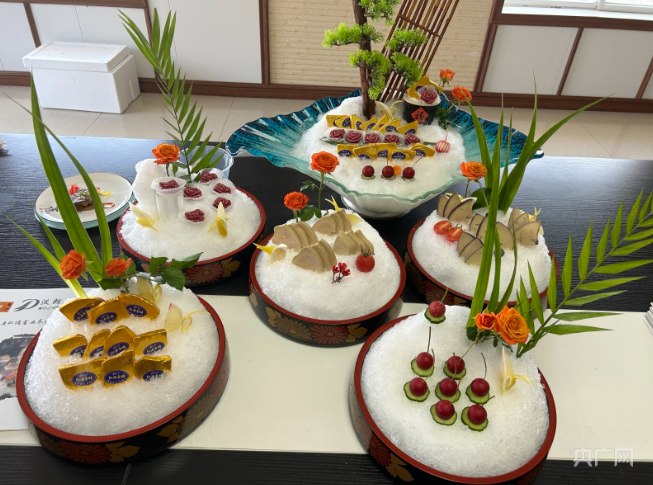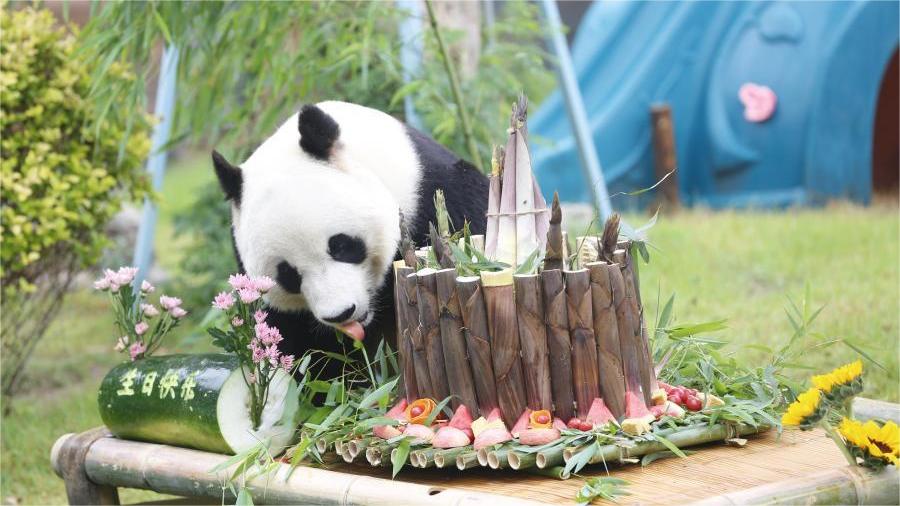Previously lesser-known specialty agricultural products gain popularity
At the beginning of this year, the tourism industry in northeast China's Heilongjiang Province flourished, and the exchange of specialty agricultural products between tourists from the southern and northern provinces led to the increased demand for local specialties.
The mention of "French foie gras" often brings to mind associations with France and high-end French restaurants.
In fact, China now accounts for 45 percent of global foie gras production, with Huoqiu county in east China's Anhui Province being the largest producer.
The county is home to over 100 companies that breed and process Landes geese introduced from France. They produce over 5,000 tonnes of goose livers annually.

Photo shows dishes made with foie gras produced in Huoqiu county, east China's Anhui Province. (Cnr.cn/Xu Qiuyun)
In recent years, the foie gras industry in Huoqiu county has expanded its product range to include over 10 flavors and processed food items, such as red wine and rose-infused foie gras, further boosting sales and transforming these hidden treasures into popular products.
Previously, caviar was mainly produced in countries like France and Belgium. However, China has now emerged as the largest producer and exporter of caviar in the world, with an annual output of about 260 tonnes, supplying 60 percent of the global market.
One caviar production enterprise in Tianquan county, Ya'an city, southwest China's Sichuan Province, accounted for 23 percent of national production by producing 60 tonnes of caviar in 2023.
This industry in the county started to develop after the company launched sturgeon farming over a decade ago.
With assistance from the local agricultural department, the company gained valuable experience through a series of trials and errors. The local government also provided technical support for the company, and a unique development model known as "shared fish ponds" was developed.
Peng Jilin, director of the agricultural and rural development center in Tianquan county, described the "shared fish ponds" model as a process where villages raise funds to construct fish ponds based on the company's standards. These ponds are then leased back to the company. In return, the village receives annual dividends from the company.
One of the agricultural products that have gained popularity this year is matcha.
Jiangkou county, Tongren city, southwest China's Guizhou Province accounts for one-fourth of the national production and sales volume of matcha.
To produce high-quality matcha, it is essential to cultivate tea leaves that meet the required standards. The local agriculture and rural affairs bureau in Tongren sent a team of experts to tea gardens to provide comprehensive technical guidance—from seed selection to cultivation and management.
In 2016, local tea companies began sending professional research and development (R&D) teams to study abroad. They applied the acquired knowledge while conducting further research, ultimately developing a matcha production line with complete independent intellectual property rights.
Aside from matcha production, Tongren is also exploring the establishment of a complete matcha industry chain. The government serves as a facilitator for collaboration, promoting matcha production through a model that involves leading enterprises, cooperatives and farmers. This approach has fostered the growth of 61 tea-related companies and 100,000 tea farmers in 22 counties and districts of the province.
Photos
Related Stories
Copyright © 2024 People's Daily Online. All Rights Reserved.









